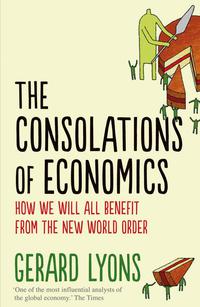Question
XYZ stock price and dividend history are as follows: Year Beginning-of-Year Price Dividend Paid at Year-End 2010 $ 130 $ 2 2011 $ 153 $
XYZ stock price and dividend history are as follows:
| Year | Beginning-of-Year Price | Dividend Paid at Year-End | |
| 2010 | $ | 130 | $ 2 |
| 2011 | $ | 153 | $ 2 |
| 2012 | $ | 128 | $ 2 |
| 2013 | $ | 133 | $ 2 |
|
| |||
An investor buys five shares of XYZ at the beginning of 2010, buys another two shares at the beginning of 2011, sells one share at the beginning of 2012, and sells all six remaining shares at the beginning of 2013. a. What are the arithmetic and geometric average time-weighted rates of return for the investor? (Do not round intermediate calculations. Round your answers to 2 decimal places.)
| Arithmetic mean | % |
| Geometric mean | % |
|
| |
b-1. Prepare a chart of cash flows for the four dates corresponding to the turns of the year for January 1, 2010, to January 1, 2013. (Negative amounts should be indicated by a minus sign.)
| Date | Cash Flow |
| 1/1/2010 | $ |
| 1/1/2011 | |
| 1/1/2012 | |
| 1/1/2013 | |
|
| |
b-2. What is the dollar-weighted rate of return? (Hint: If your calculator cannot calculate the internal rate of return, you will have to use a spreadsheet or trial and error.) (Negative value should be indicated by a minus sign. Round your answer to 4 decimal places.)
Rate of return %
Assume that you manage a risky portfolio with an expected rate of return of 15% and a standard deviation of 40%. The T-bill rate is 5%
| Stock A | 24 | % |
| Stock B | 33 | % |
| Stock C | 43 | % |
A client prefers to invest in your portfolio a proportion (y) that maximizes the expected return on the overall portfolio subject to the constraint that the overall portfolio's standard deviation will not exceed 30%.
a. What is the investment proportion, y? (Do not round intermediate calculations. Round your answer to 2 decimal places.)
Investment proportion y %
b. What is the expected rate of return on the overall portfolio? (Do not round intermediate calculations. Round your answer to 2 decimal places.)
Rate of return %
Suppose that many stocks are traded in the market and that it is possible to borrow at the risk-free rate, r. The characteristics of two of the stocks are as follows:
| Stock | Expected Return | Standard Deviation | ||||
| A | 8 | % | 55 | % | ||
| B | 4 | % | 45 | % | ||
| Correlation = 1 | ||||||
|
| ||||||
a. Calculate the expected rate of return on this risk-free portfolio? (Hint: Can a particular stock portfolio be substituted for the risk-free asset?) (Round your answer to 2 decimal places.)
Rate of return %
A pension fund manager is considering three mutual funds. The first is a stock fund, the second is a long-term government and corporate bond fund, and the third is a T-bill money market fund that yields a sure rate of 4.9%. The probability distributions of the risky funds are:
| Expected Return | Standard Deviation | |
| Stock fund (S) | 10% | 39% |
| Bond fund (B) | 5% | 33% |
|
| ||
The correlation between the fund returns is .0030.
What is the reward-to-volatility ratio of the best feasible CAL? (Do not round intermediate calculations. Round your answer to 4 decimal places.)
Reward-to-volatility ratio
Consider the following table:
| Stock Fund | Bond Fund | ||
| Scenario | Probability | Rate of Return | Rate of Return |
| Severe recession | 0.05 | 25% | 10% |
| Mild recession | 0.25 | 5% | 16% |
| Normal growth | 0.40 | 10% | 9% |
| Boom | 0.30 | 15% | 6% |
|
| |||
a. Calculate the values of mean return and variance for the stock fund. (Do not round intermediate calculations. Round "Mean return" value to 1 decimal place and "Variance" to 2 decimal places.)
| Mean return | % | |
| Variance | %-Squared | |
|
| ||
b. Calculate the value of the covariance between the stock and bond funds. (Negative value should be indicated by a minus sign. Do not round intermediate calculations. Round your answer to 2 decimal places.)
Covariance %-Squared
Step by Step Solution
There are 3 Steps involved in it
Step: 1

Get Instant Access to Expert-Tailored Solutions
See step-by-step solutions with expert insights and AI powered tools for academic success
Step: 2

Step: 3

Ace Your Homework with AI
Get the answers you need in no time with our AI-driven, step-by-step assistance
Get Started


